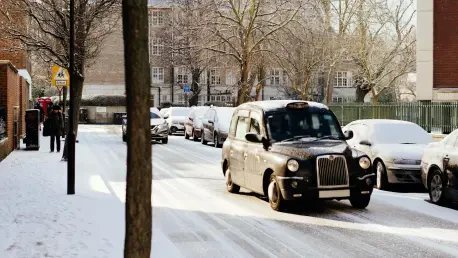I’m thrilled to sit down with Simon Glairy, a leading expert in insurance and Insurtech, whose groundbreaking work in risk management and AI-driven risk assessment has reshaped how we understand climate-related challenges in the insurance industry. Today, we’ll dive into the pressing issue of subsidence claims in the UK, exploring how climate change is amplifying risks for homeowners, the staggering costs involved, and what can be done to mitigate these threats. Our conversation will touch on the science behind ground movement, the impact of record-breaking temperatures, and the urgent need for resilience in the face of evolving environmental hazards.
Can you explain what subsidence is and how it’s becoming a growing concern for homeowners in the UK?
Absolutely. Subsidence is when the ground beneath a property sinks, often due to the soil losing moisture and shrinking. This can destabilize a building’s foundation, causing cracks and structural issues. It’s becoming a bigger concern in the UK because of changing weather patterns, especially prolonged dry spells that dry out the soil. Factors like nearby trees or shrubs pulling water from the ground can make it worse. With climate change driving more extreme weather, we’re seeing an uptick in these incidents, putting more homes at risk.
How do warmer temperatures, like the record-breaking spring of 2025, contribute to the rise in subsidence claims?
Warmer temperatures, such as those we saw in the UK’s warmest spring on record in 2025, accelerate soil drying. When it’s hotter for longer, moisture evaporates from the ground faster, especially in areas with clay-rich soils that shrink significantly when dry. This contraction creates gaps under properties, leading to sinking foundations. It’s no surprise that we saw £153 million in claims in just the first half of that year—those conditions directly amplify ground movement and damage.
Speaking of those claims, how does the £153 million figure for the first half of 2025 compare to trends from previous years?
That £153 million figure is staggering and reflects a noticeable jump compared to prior years. While subsidence claims have been creeping up over time due to more frequent extreme weather, 2025 stands out because of the intensity of that spring heat. Historically, we’ve seen costs rise during dry years, but this spike—along with nearly 9,000 households affected—suggests we’re hitting new thresholds. It’s a clear signal that the risks are not just growing; they’re accelerating.
Climate change has been flagged as a key driver of subsidence risk. Can you unpack how these environmental shifts are making the problem worse?
Certainly. Climate change brings more extreme and unpredictable weather patterns—think longer droughts followed by intense rainfall. Dry periods cause soil to contract, while sudden wet spells can erode or destabilize it further. In the UK, areas with clay soils are especially vulnerable because they’re so reactive to moisture changes. Over the long term, as temperatures rise and weather becomes less predictable, we can expect subsidence to affect more regions and happen more often, challenging both homeowners and insurers to adapt.
What are some red flags homeowners should look for to spot potential subsidence early?
Homeowners need to be vigilant. One key sign is cracks in walls that are wider than three millimeters, often diagonal and broader at the top than the bottom, showing up both inside and outside the house. These usually appear suddenly, unlike gradual wear. Other clues include doors or windows that start sticking for no obvious reason, or wallpaper rippling in areas that aren’t damp. These can indicate the ground beneath is shifting, and catching them early can save a lot of headache and cost down the line.
Insurers often recommend managing vegetation and maintaining plumbing to prevent subsidence. Why are these steps so important?
Those steps are critical because they address root causes—literally and figuratively. Trees and shrubs near a home can suck moisture from the soil, especially during dry spells, causing the ground to shrink unevenly. Managing or trimming vegetation helps keep soil moisture stable. Similarly, poor plumbing or drainage, like leaking pipes, can either wash away soil or oversaturate it, both of which weaken the foundation. Regular maintenance of these systems can prevent small issues from turning into major subsidence claims.
There’s been a push for a dedicated government role, like a Minister for Resilience, to address climate risks such as subsidence and flooding. Why do you think this kind of leadership is necessary?
I think it’s essential because climate risks like subsidence, flooding, and extreme heat are interconnected challenges that need a unified strategy. A Minister for Resilience could coordinate efforts across sectors—insurance, construction, urban planning—to build protections into our infrastructure and policies. This role could drive investment in vulnerable areas, ensure new homes aren’t built in high-risk zones, and help retrofit existing properties to withstand these threats. Without centralized leadership, we risk fragmented responses that fall short of what’s needed.
Looking ahead, what is your forecast for how subsidence and other climate-driven risks will impact the insurance industry in the coming years?
I believe we’re at a turning point. Subsidence and other climate-driven risks will likely continue to escalate, pushing claim costs higher and forcing the insurance industry to innovate rapidly. We’ll see more reliance on technology, like AI for risk modeling, to predict and price these hazards accurately. At the same time, insurers will need to work closer with governments and homeowners to promote prevention—think incentives for resilient building or better land-use planning. If we don’t act proactively, the financial and human toll of these events could become unsustainable, so the next decade will be about adaptation and collaboration on a massive scale.









